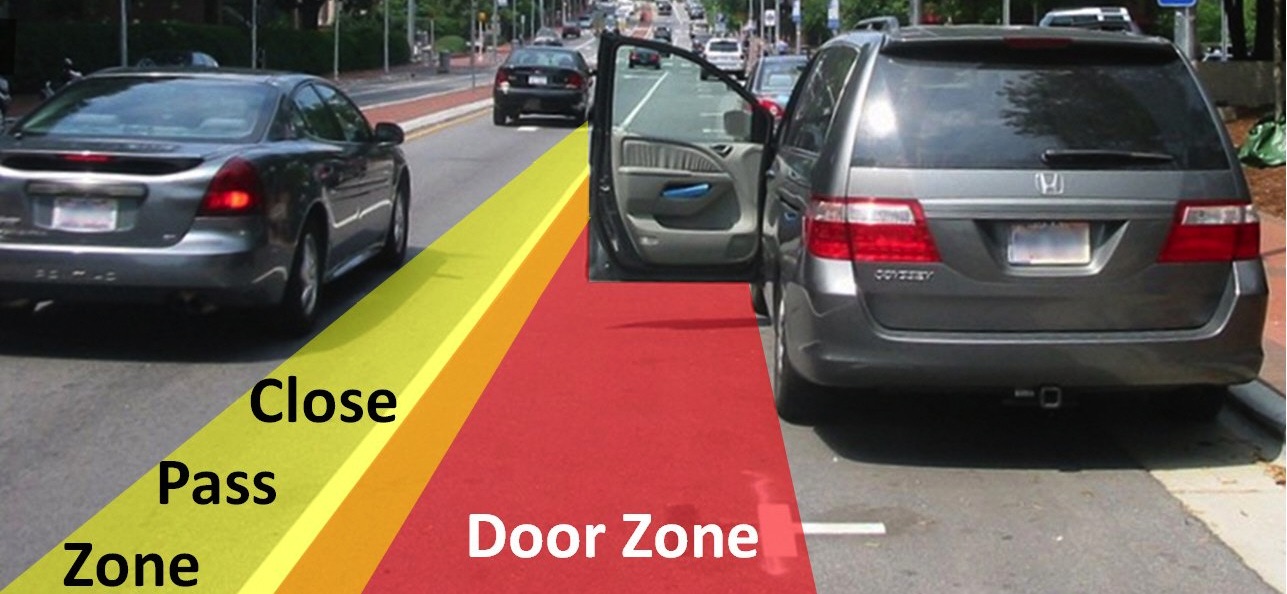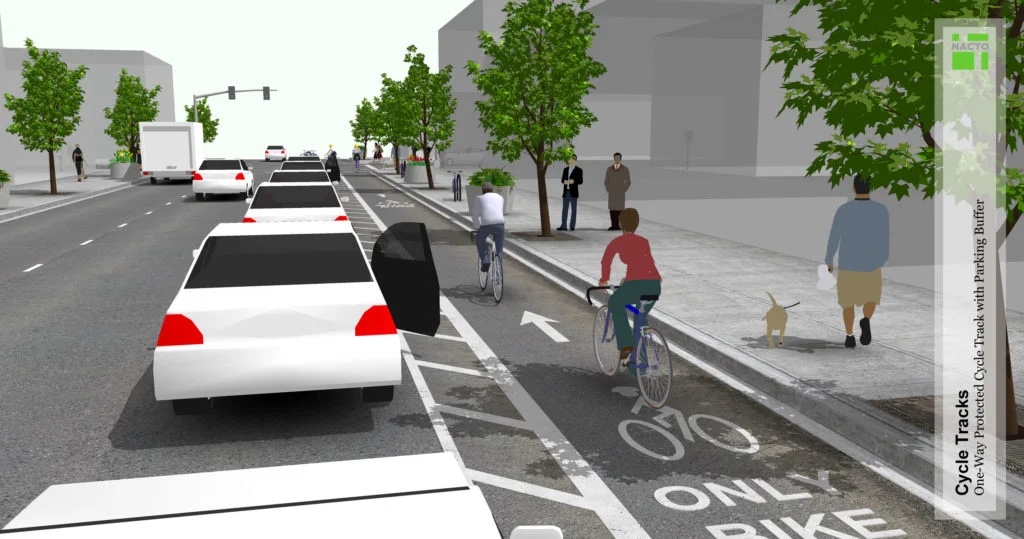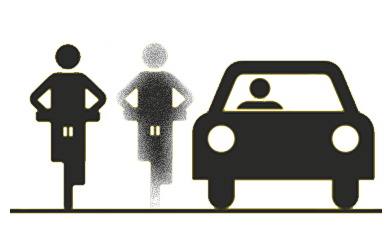Avoiding the "Door Zone"
A short overview

What is the “door zone”?
This is a common term for the space that an open car door extends beyond a car parked at the curb. Drivers opening their car doors before looking for cyclists in the roadway or bike lane is one of the most common forms of bike-car collisions, often resulting in serious injury or worse (bicyclists sometimes refer to it as “getting doored”).
Whose fault is it?
“No person shall open the door of a vehicle on the side available to moving traffic unless it is reasonably safe to do so and can be done without interfering with the movement of such traffic, nor shall any person leave a door open on the side of a vehicle available to moving traffic for a period of time longer than necessary to load or unload passengers.”
Why is it so common?
Part of the reason is due to inattention on the part of the driver. The more people that try biking, even once in a while, the more likely they will think to look for cyclists when opening their car door, but other tips like getting in the habit of opening the driver’s side door with the right hand (AKA the “Dutch Reach”, forcing a person to turn and look to the left) make incidents less likely.
An even bigger issue than inattention, however, is street engineering. The current minimum standard recommendation for the combined width of a bicycle lane and a parallel parking area is 12 feet (usually 5’ bike lane + 7’ parking lane).
However, many cars are themselves around 7 feet wide, with doors that extend 3-4 feet, which leaves only a few feet of useable bike lane space (assuming that the car is even parked close to the curb). A bike itself can take up about two feet of space. So suddenly a nice, clear bike lane doesn’t look so great anymore.
What can I do?
The good news is that most cities in the Bay Area have their own standards for bike lane width which go beyond the federal recommendations.
Here at Bike East Bay we advocate for a minimum of 14 feet bike lane and parking space combined (even more is better), and when the roadway size will not accommodate that we suggest either parking removal, travel lane narrowing or conversion, or a shared bike/car lane with significant engineering to reduce speeds and discourage through car traffic. We also encourage cities to stripe built-in buffers between bike lanes and parallel parked cars, so the danger zone is made clear to everyone.
Placing the bike lane at the curb and moving the parking out into the street is an even better solution, referred to as a “parking-protected bikeway”.
This not only creates a physical buffer between bikes and moving cars, but it also typically means the driver-side door will open into the street, and not the bike lane. Even if a cyclist is hit by a car door in this scenario, they will be pushed toward the sidewalk instead of toward moving car traffic.


 Imagine an invisible friend biking on your right. If there is enough space between you and the parked cars for your friend to fit then that usually means you are clear of the “door zone”.
Imagine an invisible friend biking on your right. If there is enough space between you and the parked cars for your friend to fit then that usually means you are clear of the “door zone”.


